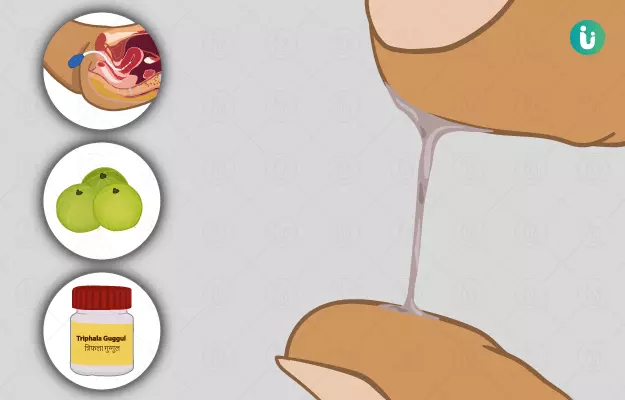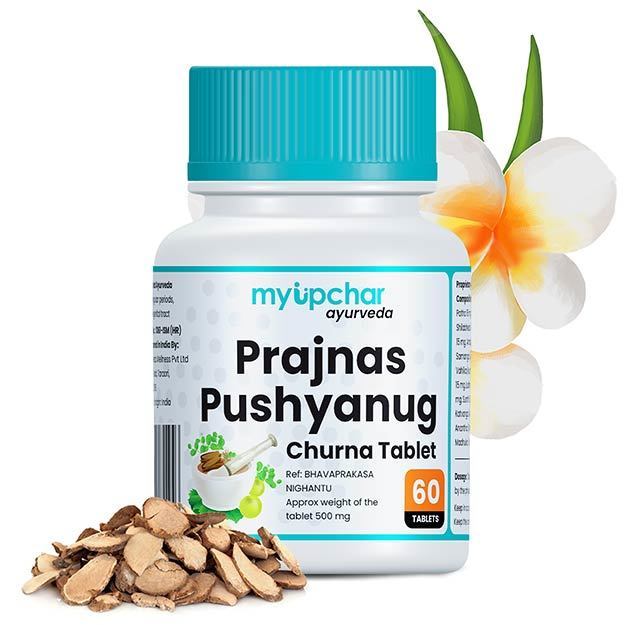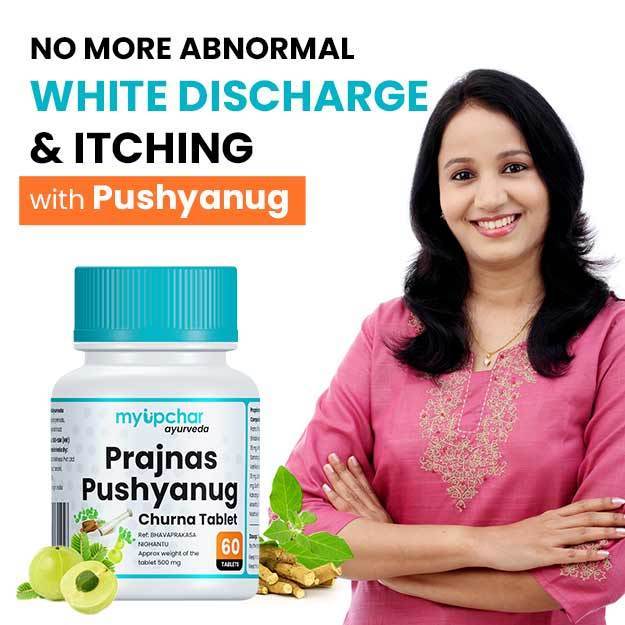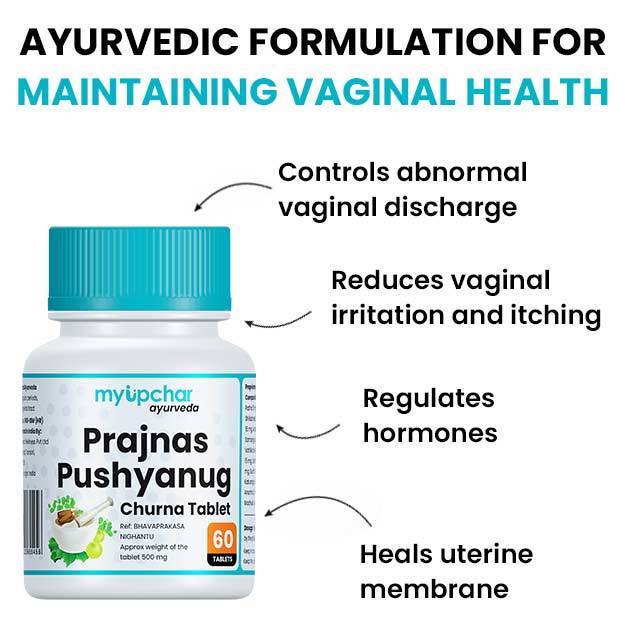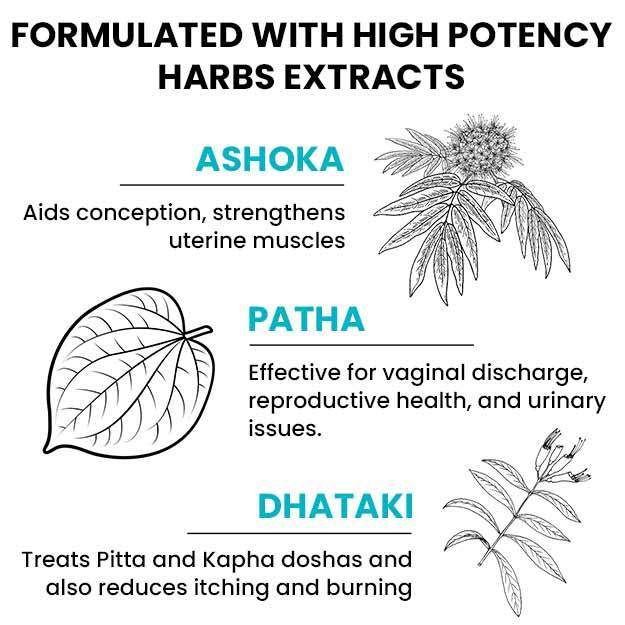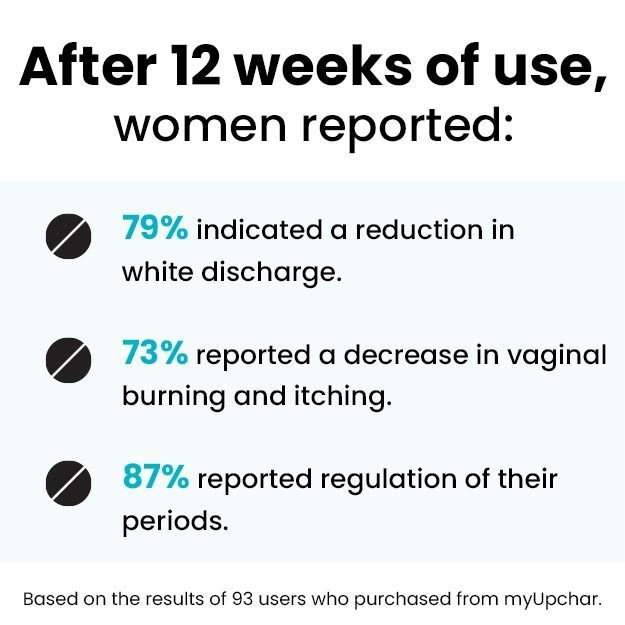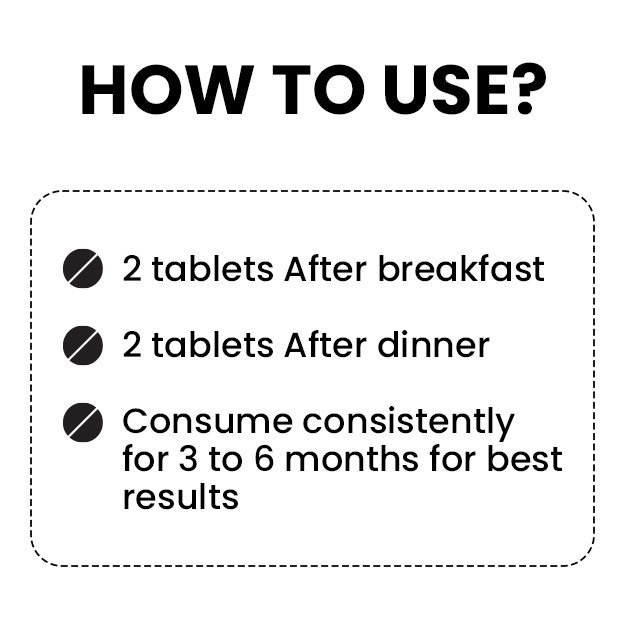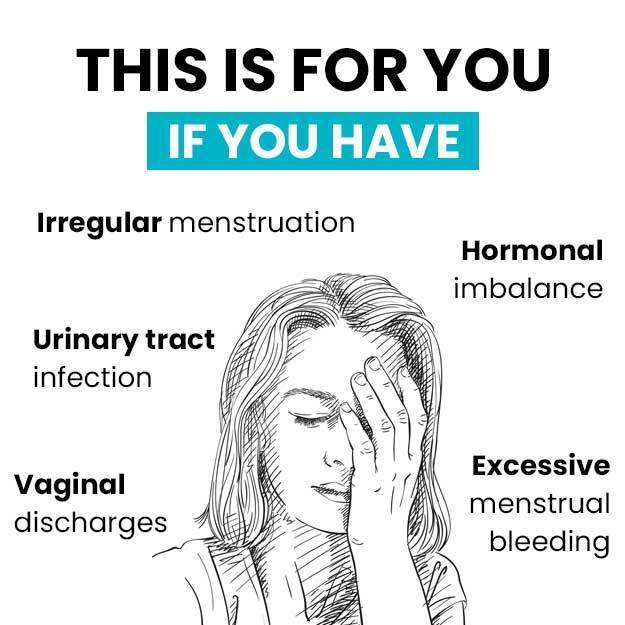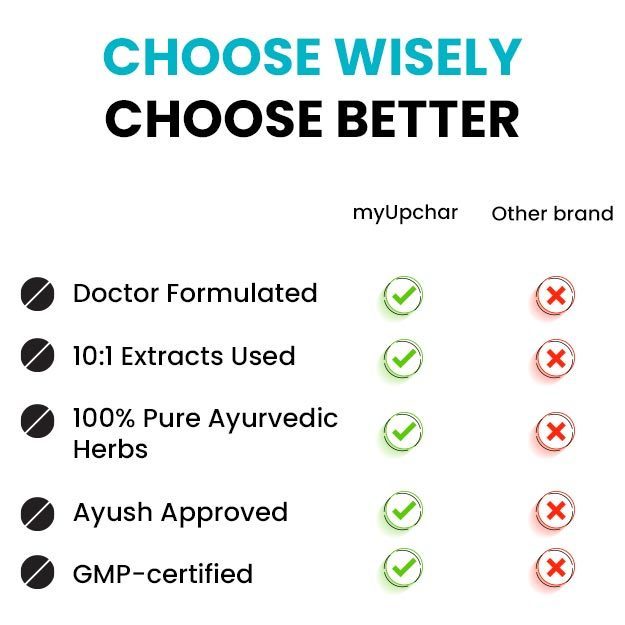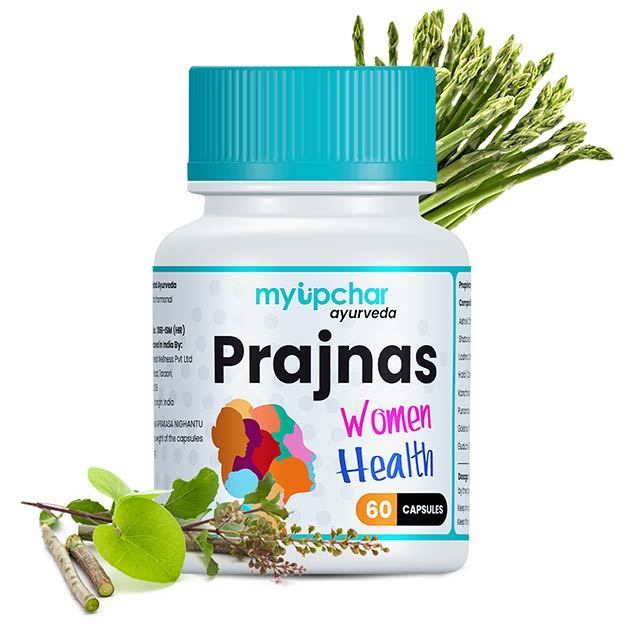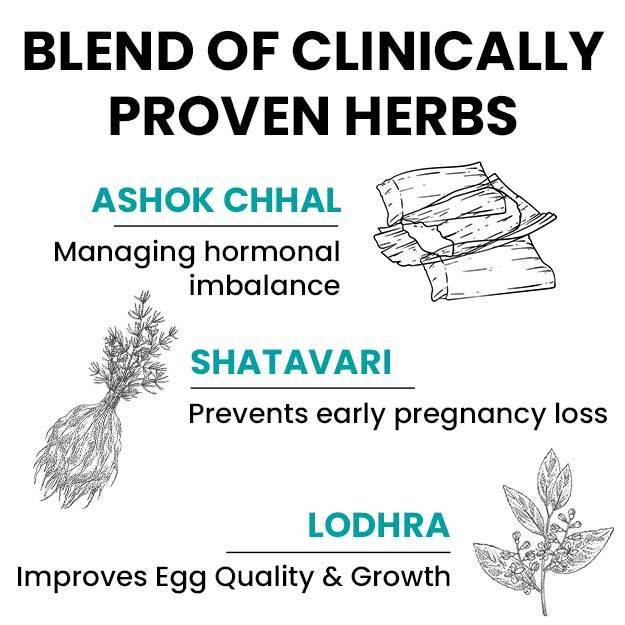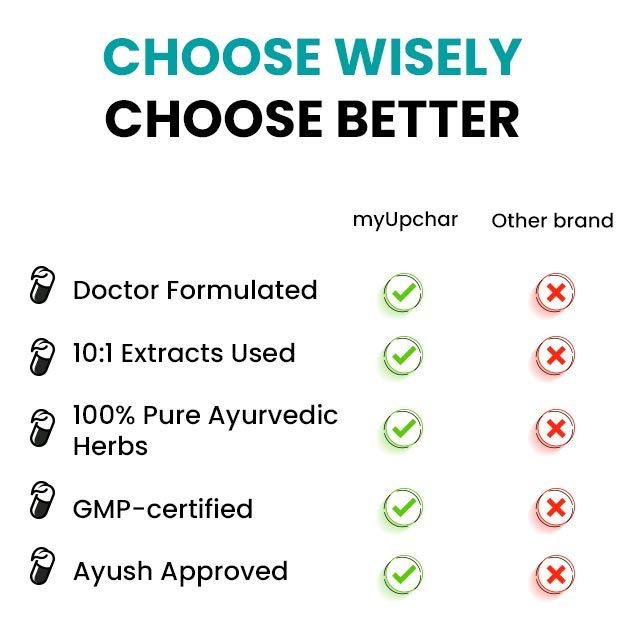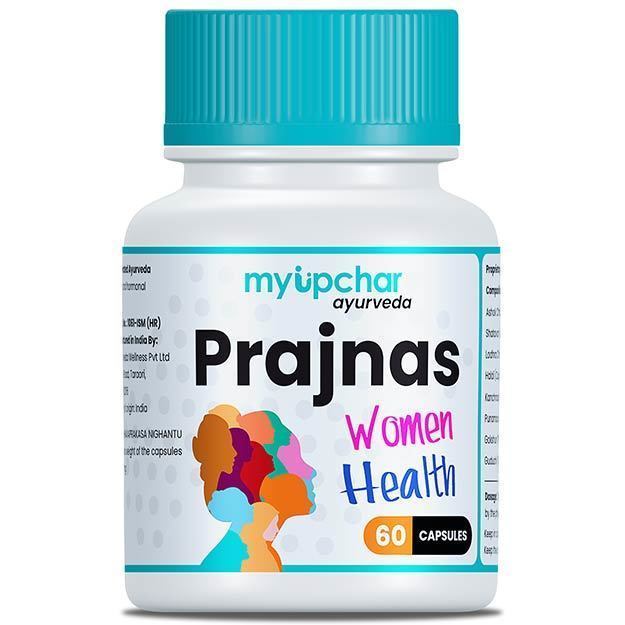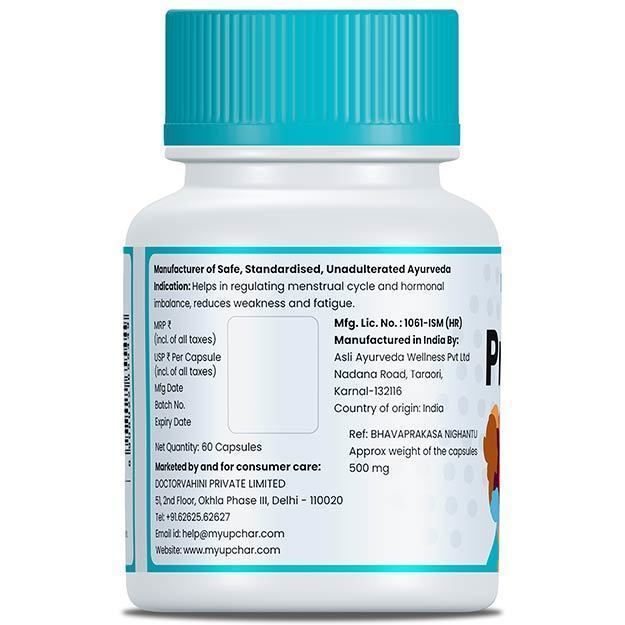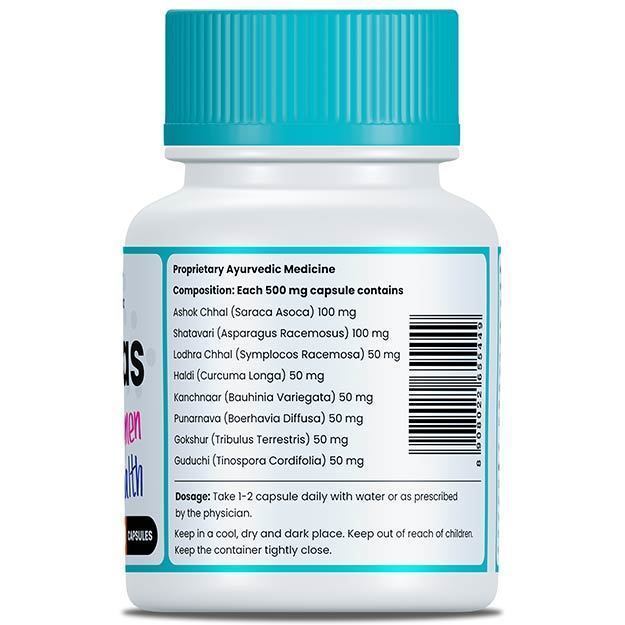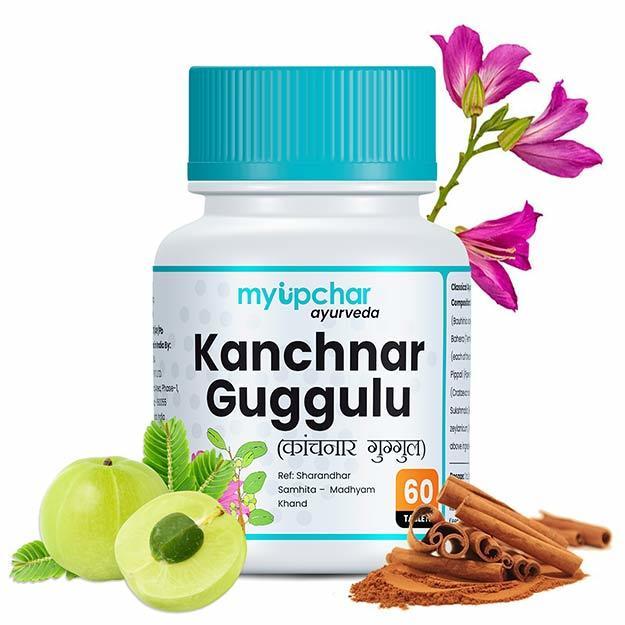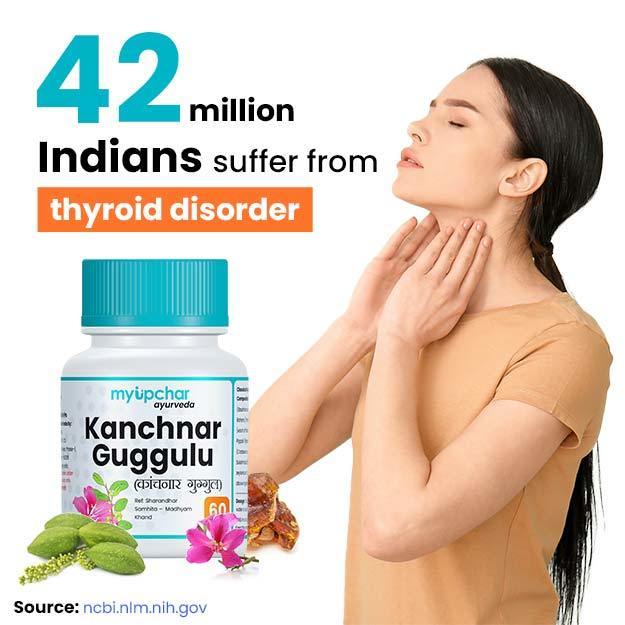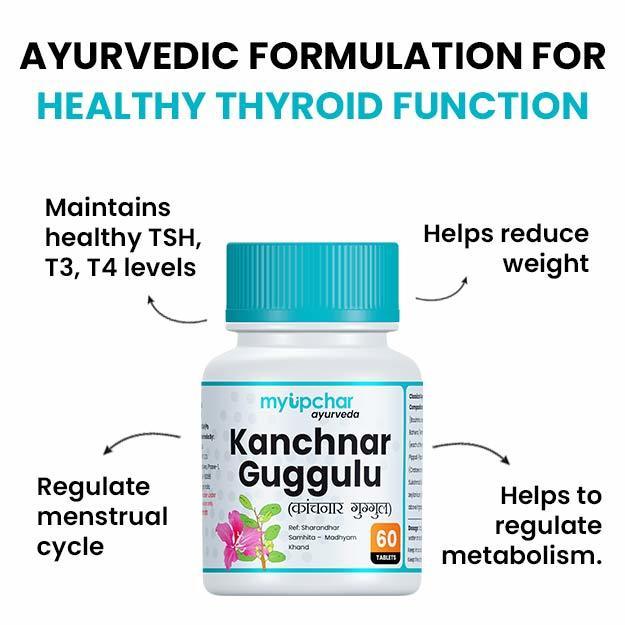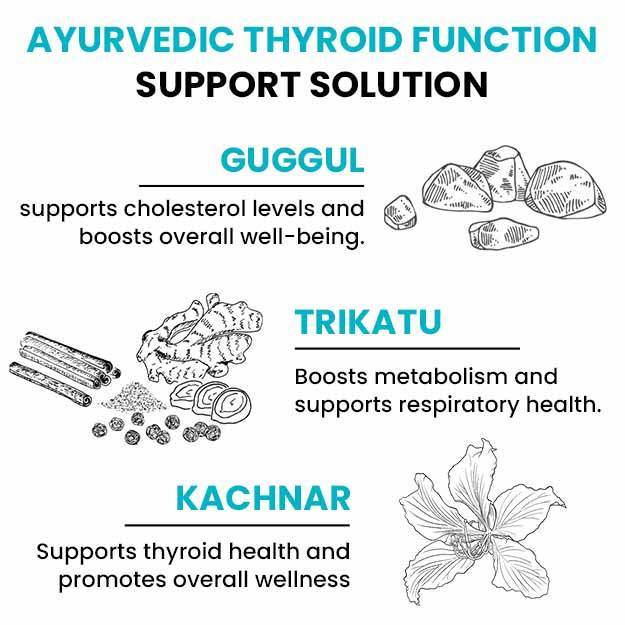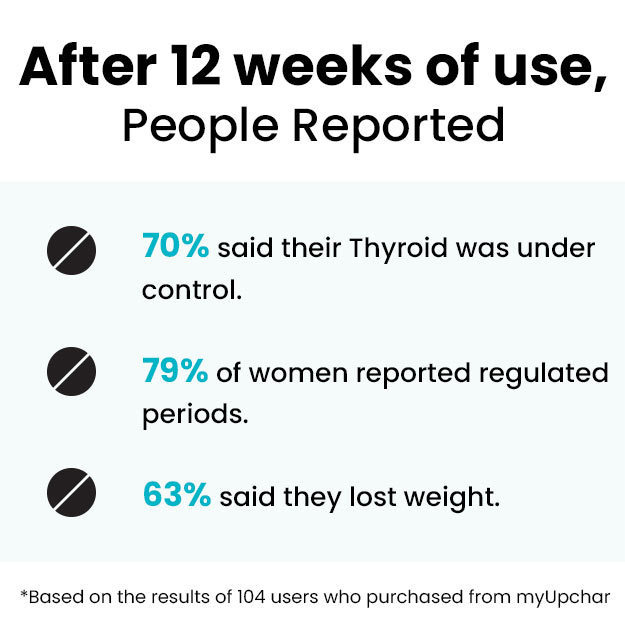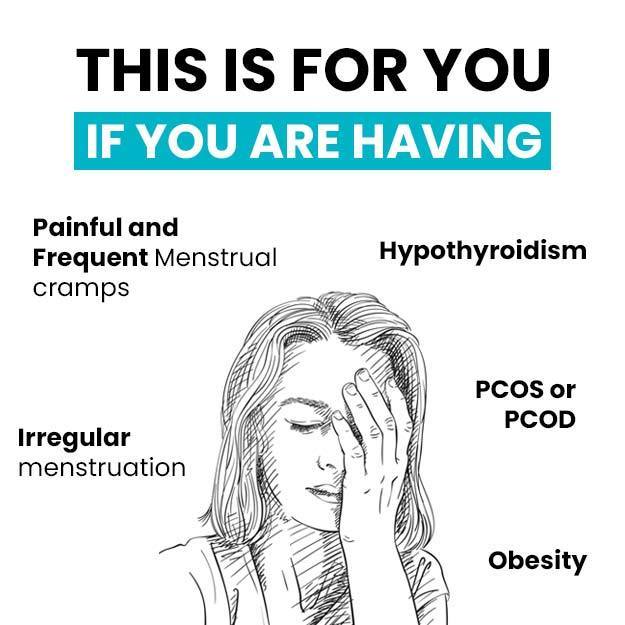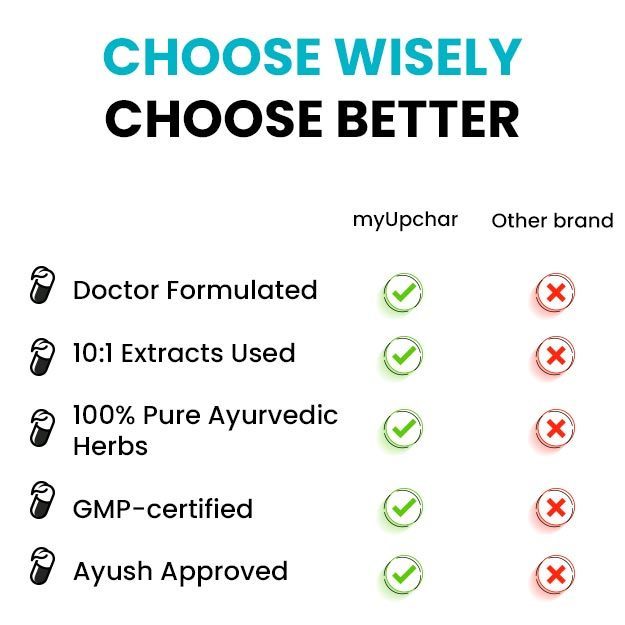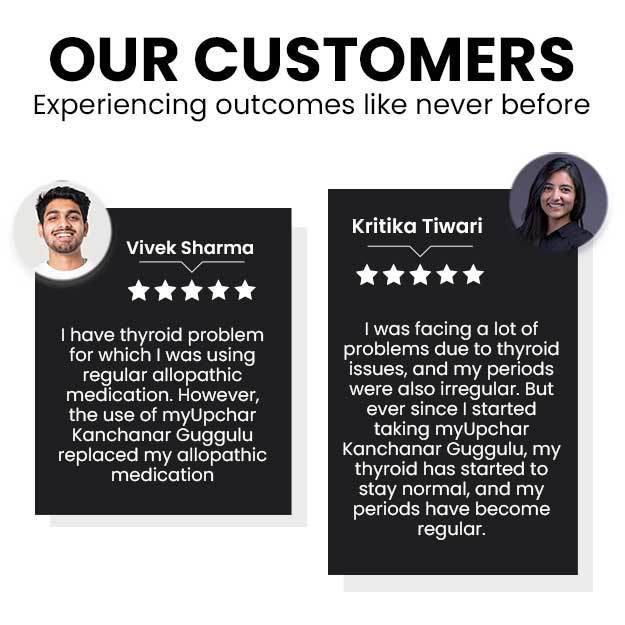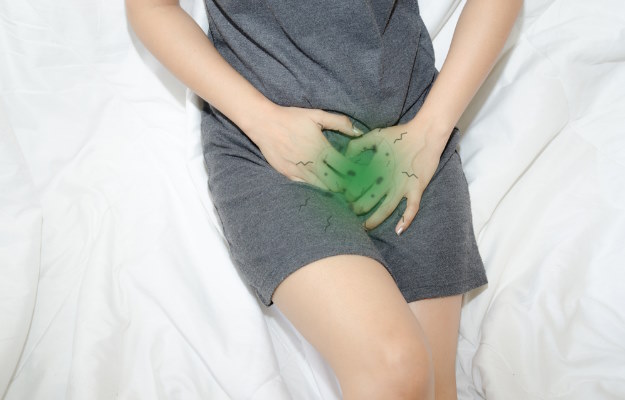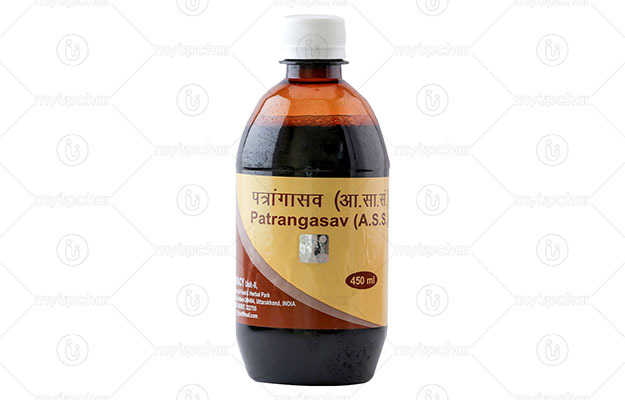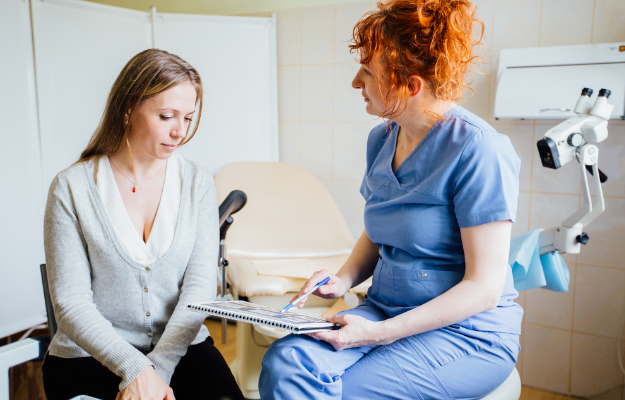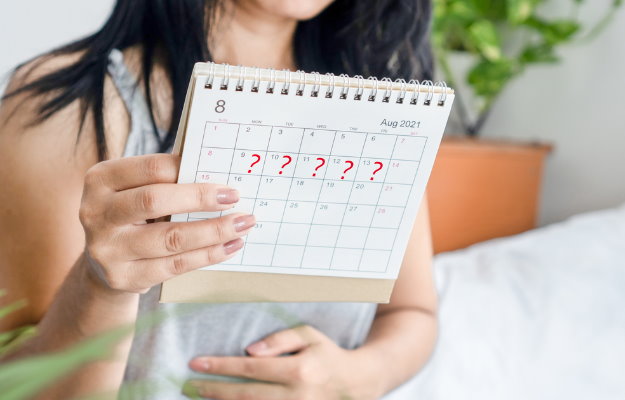Leucorrhoea is a condition primarily characterised by excess vaginal discharge that may or not be associated or caused due to infections or inflammation in the lower genital tract. Women with leucorrhoea experience sexual anxieties, fear of cancer, fear of conceiving, embarrassment and local inconvenience, which mount up to a significant amount of mental stress, though the condition itself is not fatal. Leucorrhoea is not categorised as a disease in Ayurveda so there is no definite Ayurvedic term for it. However, Shwetapradara is a term used to denote excessive or white vaginal discharge, which is characterised as a major symptom linked with multiple gynaecological conditions. The type and consistency of vaginal discharges that occur in women with leucorrhoea are based on the dosha that is vitiated.
Ayurvedic treatment for leucoorhoea comprises of local applications in the form of varti (suppositories), dhupana (incensing), prakshalana (cleansing) and pichu. Agni karma (thermal cauterisation) is also performed on women who have severe leucorrhoea. Herbs like amalaki (Indian gooseberry), chopchini (china root), and lodhra (lodh tree) are used to treat leucorrhoea. Ayurvedic formulations of triphala guggulu, chandraprabha vati and kaishora guggulu are beneficial in improving the condition. Local douches using a kwatha (decoction) and water are also recommended for leucorrhoea treatment. Including freshly cooked and easily digestible foods, maintaining local hygiene and avoiding synthetic undergarments can help prevent the condition and assist in improving symptoms.
- Ayurvedic view of leucorrhoea
- Ayurvedic remedies for leucorrhoea
- Ayurvedic herbs for leucorrhoea
- Dietary and lifestyle changes for leucorrhoea patient as per ayurveda
- How effective are ayurvedic remedies for leucorrhoea
- Side effects and risks of ayurvedic remedies for leucorrhoea
- Takeaway
Ayurvedic view of leucorrhoea
Shwetapradara is caused due to an imbalance in the rasa and kapha dhatu. The following types of discharges are observed in women with leucorrhoea:
- Rakta gulma: Foul-smelling purulent discharge with amenorrhoea (no periods) and uterine growths.
- Kaphaja yonivyapad: Yellowish-white-coloured thick discharge with severe itching.
- Yoni arsha: Reddish white-coloured discharge with a foul smell along with a bulky uterus with polyploidal growth.
- Upapluta yonivyapad: White-coloured discharge with mucus. The individual may also experience a pricking pain in the vagina.
- Atyananda yonivyapada: White-coloured discharge accompanied by severe itching caused due to poor hygiene.
- Karnini yonivyapada: White-coloured discharge. The individual may also have oedema or erosion on the cervix.
Overeating, mental stress, suppressing natural urges, constant moistness in the vagina, wearing stained underwear for a long time and lack of hygiene cause leucorrhoea. Topical applications and douches using medicated oils or decoctions like nimba patra kwatha (a decoction of neem leaves) help reduce vaginal discharges. Ayurveda describes medications and herbs that have kaphaghna (kapha-destroying) properties for treating leucorrhoea. Eliminating the causes of infection in the vaginal area also helps prevent leucorrhoea.
Ayurvedic remedies for leucorrhoea
The following local applications are recommended for leucorrhoea treatment in Ayurveda:
- Varti
- Yoni varti (vaginal suppository) is made with finely powdered yashtimadhu (mulethi) and lodhra along with madhu (honey) or a blend of finely powdered nimba (neem), triphala [a combination of amalaki (Indian gooseberry), vibhitaki (belleric myrobalan), and haritaki (chebulic myrobalan)], and sphatika (alum) with honey.
- It is usually used 8 to 10 days after menstruation.
- Dhupana
- Dhupana is a treatment method that includes application of dhupa (incense) in the vaginal area.
- A dhupana of yava (barley), tila (sesame) and guggulu (Indian bdellium-tree) with ghrita (ghee/clarified butter) or a dhupana of daruharidra (Indian beriberi) and haridra (turmeric) may be suggested for the management of leucorrhoea.
- Pichu
- Pichu is a tampon made of cotton swab wrapped in a gauze cloth tied with a long thread. It is an effective treatment method as it helps release medicine continually into the vagina.
- Yoni pichu is known to be one of the simplest procedures in Ayurveda that delivers medicines to the vagina. Elongated or round pichus are used for deep or shallow insertions, respectively. Once inserted, pichu is kept in vagina for about 5 to 6 hours, until the individual has to urinate.
- Jatyadi taila, karanja taila, dhatakyadi taila and nyagrodha kashaya are used as medicines in pichu for leucorrhoea treatment.
- Prakshalana
- Prakshalana is the term used to denote douches. Kwathas (decoctions) or churnas (powders) are used in prakshalana for cleansing the vagina in case of leucorrhoea.
- Nyagrodhadi kwatha, nimba patra kwatha, panchavalkala kwatha, lodhra kwatha or chandana (sandalwood) kwatha are given to women with leucorrhoea typically 8 to 10 days after menstruation.
- Decoctions made from a combination of sphatika churna, triphala kwatha, cow’s urine and buttermilk or a combination of triphala, guduchi (heart-leaved moonseed) and danti kwatha are given usually 8 to 10 days after menstruation.
- Pushyanuga churna is given orally after meals or as per the physician’s direction. It helps in vaginal cleansing.
- Douches with herbal formulations like panchavalkala kwatha, nimba patra kwatha and sphatika jala are also recommended as local treatments for leucorrhoea.
- Agni karma
- Agni karma aims at treating the skin, blood vessels, bone and muscle diseases by applying fire directly or indirectly on the affected part. It also prevents the relapse of the disease.
- Agni karma has been used to treat gynaecological and obstetrical diseases. This procedure can prevent leucorrhoea as it kills parasites inside the vagina and helps sterilise the affected area.
- It is performed primarily to eliminate premalignant lesions in the cervix, which is usually associated with leucorrhoea.
- Kshara karma
- Kshara karma, the use of caustic agents for the treatment of a disease, is termed as a superior treatment in Ayurveda. This therapy is useful to treat the internal or difficult-to-reach areas of the body. The kshara (caustic) agents given in this therapy act as corrosives due to their tejobhuta (fire element) properties, which promote healing.
- Herbal cauterisation is an effective form of treatment for cervical erosions. It significantly reduces the rate of recurrence of a condition and is more effective in comparison to electrocauterisation.
- Along with leucorrhoea, kshara karma is also useful in treating genital warts, non-healing chronic cervical ulcers, and cervical polyps.
Ayurvedic herbs for leucorrhoea
Ayurvedic herbs for leucorrhoea
- Amalaki
- Amalaki is rich in vitamin C and acts as a rejuvenative and nutritive tonic. It is used to provide relief from ulcers, gastrointestinal disorders, internal bleeding and painful inflammation.
- Amalaki improves the longevity and quality of life. It has cleansing and worm-destroying properties, which make it useful in people with leucorrhoea. It protects the body from infections that are caused due to worms and cleanse the vagina.
- Amalaki acts on all three doshas and is helpful in many diseases such as amlapitta (acidity), raktapitta (bleeding disorder), and daha (burning sensation).
- It is available in the form of decoctions, sweets and powders. You can take amalaki churna with honey, water, sugar or as per your physician’s direction.
- Chopchini
- Chopchini is a climbing herb that grows in China. It has diuretic, tonic, aphrodisiac (increases libido), astringent (constricts tissues), and demulcent (protects mucus membranes) properties. It is primarily useful in diseases caused due to vitiated vata.
- Chopchini has antibiotic and antibacterial properties that help prevent and clear infections in the body. Therefore, it is helpful in improving leucorrhoea caused due to microbial infections.
- It is used to treat skin conditions such as syphilis and nervous diseases such as epilepsy and gout. A paste made from the rhizomes of chopchini is used to reduce swelling.
- You can take chopchini churna with water or as per your physician’s direction.
- Lodhra
- Lodhra has the property of being laghu (light). After digestion, it becomes katu (bitter) thus providing coolness to the body.
- Lodhra has been used to reduce the vitiation of rakta dosha in the body. It also pacifies kapha and pitta doshas. Lodhra is used to treat gastrointestinal disorders and promote faster healing of wounds.
- It is a herb of choice in the treatment of various gynaecological conditions including leucorrhoea and menstrual disorders.
- Lodhra stops the growth of many pathogenic microbes like Escherichia coli and Micrococcus pyogenes and has anti-microbial and anti-inflammatory properties, which make it useful in leucorrhoea treatment. It also helps reduce vaginal discharge.
- You can take lodhra churna with tandulodaka (rice water) or as per your physician’s direction.
Ayurvedic medicines for leucorrhoea
- Triphala guggulu
- Triphala guggulu is a herbal decoction made of triphala, trikatu (a combination of three acrids – pippali [long pepper], shunthi [dried ginger] and maricha [black pepper]) and guggulu.
- It is used to treat rheumatoid arthritis, sciatica, urinary tract diseases, leucorrhoea and osteoarthritis.
- Triphala guggulu helps treat medoroga (diseases of the meda dhatu) and vatavyadhi (a disease caused due to the aggravation of vata).
- You can take triphala guggulu vati (tablet) with ushira kashaya (khus decoction), milk, water or as per your physician’s direction.
- Kaishora guggulu
- Kaishora guggulu is a herbal formula containing guduchi, trikatu, triphala, cow’s ghee, vidanga (false black pepper) and 18 other ingredients.
- This medication is indicated for diabetes carbuncles, chronic arthritis, anaemia, ascites, chronic wounds, leucorrhoea and skin diseases.
- Kaishora guggulu pacifies vata; therefore, it is useful in vatarakta (gout) and vatavyadhi.
- You can take kaishora guggulu vati with milk, water or as per your physician’s direction.
- Chandraprabha vati
- Chandraprabha vati is made of shilajatu (asphaltum), rock salt, ativisha (Indian atees), triphala, vacha (calamus) and 42 other ingredients.
Urjas Shilajit prepared by myUpchar Ayurveda helps in dealing with the problem of leucorrhoea. Its natural properties contribute to female reproductive health. Order Shilajit Capsules and Shilajit Resin now and get rid of leucorrhoea.
- Chandraprabha vati is made of shilajatu (asphaltum), rock salt, ativisha (Indian atees), triphala, vacha (calamus) and 42 other ingredients.
-
- This medicine is used to treat urine incontinence, spermatorrhoea, leucorrhoea, diabetes insipidus and diseases of the urogenital system. It is given as a preventive medication after surgeries performed in people with urinary or genital diseases.
- You can take chandraprabha vati with milk, water, honey or as per your physician’s direction.
As treatments vary according to numerous factors and an individual’s prakriti (constitution), consult a qualified Ayurvedic doctor for the appropriate medications and treatments for your specific complaints.
Dietary and lifestyle changes for leucorrhoea patient as per ayurveda
Do’s
- Consume foods like old rice, barley, wheat, chickpea, fresh buffalo's ghee, lentils, apples, ginger, spinach, dates, pomegranate, cow's milk, coriander, grapes, bottle gourd, goat's milk, mamsa rasa (meat broth) and yusha (soup).
- Walk in the sunlight.
- Eat easily digestible foods, fresh fruits and vegetables.
- Eat freshly prepared meals.
- Try to remain happy and avoid stress or sadness.
- Maintain celibacy (abstain from sexual activity) and local hygiene.
Don’ts
- Do not suppress natural urges such as urinating and bowel movements.
- Do not sleep during the day.
- Do not eat black gram, vinegar, onion, pickle, brinjal, sour curd, oil, garlic, jaggery, sour substances and spicy foods.
- Do not consume alcohol. (Read more: Effects of alcohol on the body)
- Do not stay awake at nights.
- Do not overly exercise, fast, or overeat.
(Read more: Vaginal health)
How effective are ayurvedic remedies for leucorrhoea
In a clinical study, 104 women with leucorrhoea were divided into two groups. One group received nimbadi yoni varti, and the other group received clingen vaginal suppositories. About 78% of the group receiving nimbadi yoni varti showed significant reliefe from symptoms, whereas only 66% of the group receiving clingen vaginal suppositories reported improvement.
A research study conducted to assess the efficacy of vaginal douching using karanja in women with leucorrhoea indicated that it is a suitable herb for leucorrhoea treatment, and it is efficient in improving leucorrhoea symptoms significantly.
Another study was conducted to test the efficacy of chandraprabha vati in 25 patients with leucorrhoea. It was concluded that Chandraprabha vati reduce vitiated kapha due to its kashaya (astringent) properties. It also improved kapha and rasa dhatu and decreased vaginal secretions in these patients.
Side effects and risks of ayurvedic remedies for leucorrhoea
Most ayurvedic medicines are considered to be safe when taken in proper dosage under the supervision of an ayurvedic physician. However, they may have some side effects, depending on individual physiology and physical condition for example, amalaki may cause diarrhoea in people who have excess pitta in their body.
Takeaway
Leucorrhoea causes discomfort in women and even becomes painful and severe in some cases. Ayurvedic herbs and formulations destroy or reduce the microbes that cause the infection and bring back the balance of rasa and kapha in the body to reduce vaginal secretions, thereby, promoting better management of leucorrhoea. Local applications like herbal suppositories, douches and cleansing methods used in Ayurveda help maintain vaginal hygiene and treat leucorrhoea. Eating the right foods further adds on to the efficacy of the Ayurvedic treatment for leucorrhoea.
Find Ayurvedic Doctor in cities
Doctors for Ayurvedic remedies for Leucorrhea

Dr. Ayush Bansal
Ayurveda
2 Years of Experience

Dr. Megha Sugandh
Ayurveda
6 Years of Experience

Dr. Nadeem
Ayurveda
3 Years of Experience

Dr.Ashok Pipaliya
Ayurveda
12 Years of Experience
References
- Kamini Dhiman. Leucorrhoea In Ayurvedic Literature - A Review. Ayurpharm - International Journal of Ayurveda and Allied Sciences, 2014;3(3):73-78.
- Ministry of AYUSH, Govt. of India. Ayurvedic Standard Treatment Guidelines. [Internet]
- Kumar Ajay. Ayurvedic Parasurgical Procedures Commonly Used in Female Reproductive Diseases. International Journal of Health Sciences & Research, Vol.6; Issue: 7; July 2016.
- Ministry of AYUSH, Govt. of India. The Ayurvedic Pharmacopoeia Of India. [Internet]
- Rajiv Gandhi Government Post Graduate Ayurvedic College. Kayachikitsa . Paprola, Himachal Pradesh. [Internet].
- Pooja Singh, Rajeev Singh , L N Gupta, Neeraj Kumar. Lodhra- A Single Remedy For Different Ailments. International Journal of Pharmaceutical & Biological Archives 2015; 6(1): 1 - 7.
- Oushadhi. Gulika & Tablets. Govt of Kerala. [Internet]
- Prof. G.S. Lavekar. Classical Ayurvedic Prescriptions for common Diseases. Central Council for Research in Ayurveda and Siddha. Department of AYUSH, Ministry of Health & Family Welfare, Government of India.
- Ministry of AYUSH, Govt. of India. Ayush Research Portal. [Internet]
- T. Borah, J. Choudhury, D. Baruah, B. K. Bharali. Effect Of Candraprabhavati And Pu~Yanugac~A In Svetapradara. Aryavaidyan Vol.27, No.1, August - October, 2013, Pages 54 - 56.

